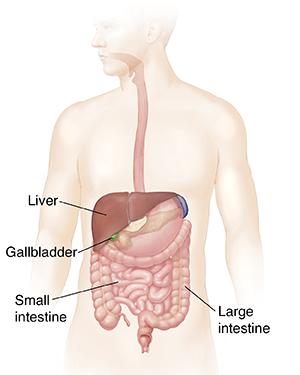Understanding the Liver Biopsy Procedure
 A liver biopsy is a procedure that takes a small piece of liver tissue for examination under a microscope. It can help your healthcare provider determine if there are signs of damage or disease. It's usually performed by inserting a needle from the outside into the liver, in the right upper part of your abdomen. Occasionally, it's performed by passing special instruments through a vein to get to the liver.
A liver biopsy is a procedure that takes a small piece of liver tissue for examination under a microscope. It can help your healthcare provider determine if there are signs of damage or disease. It's usually performed by inserting a needle from the outside into the liver, in the right upper part of your abdomen. Occasionally, it's performed by passing special instruments through a vein to get to the liver.
The Liver
The liver is a large organ in the upper right part of the abdominal cavity. A healthy liver metabolizes proteins, carbohydrates, and fats. It also makes a digestive fluid (bile) and removes blood toxins.
Who needs a liver biopsy?
A liver biopsy may be done if you have:
-
Symptoms of a liver problem. These include yellowing skin and eyes or dark urine (jaundice) from infection, scarring, or damage from medicines.
-
Abnormal liver imaging tests, blood tests, or liver enzymes
-
A chronic liver condition, such as hepatitis or nonalcoholic fatty liver disease
-
An abnormal liver scan
What a liver biopsy can do
A liver biopsy helps your healthcare provider diagnose a liver problem, such as cirrhosis or a fatty liver. He or she looks at your liver cells under the microscope. It also helps the healthcare provider in finding the cause of your liver problem and how serious it is.
Possible risks and complications
Risks and complications can include the following:
-
Infection
-
Internal bleeding from the liver
-
Bile leakage
-
Rectal bleeding
-
Pain
-
Damage to organs near the liver. These include the lungs, gallbladder, kidneys, or intestines.
-
Need for a second liver biopsy if not enough liver tissue was taken the first time
Online Medical Reviewer:
Jen Lehrer MD
Online Medical Reviewer:
L Renee Watson MSN RN
Online Medical Reviewer:
Rita Sather RN
Date Last Reviewed:
7/1/2016
© 2000-2024 The StayWell Company, LLC. All rights reserved. This information is not intended as a substitute for professional medical care. Always follow your healthcare professional's instructions.